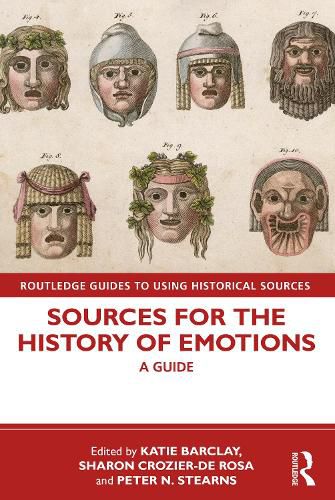Readings Newsletter
Become a Readings Member to make your shopping experience even easier.
Sign in or sign up for free!
You’re not far away from qualifying for FREE standard shipping within Australia
You’ve qualified for FREE standard shipping within Australia
The cart is loading…






Offering insights on the wide range of sources that are available from across the globe and throughout history for the study of the history of emotions, this book provides students with a handbook for beginning their own research within the field.
Divided into three parts, Sources for the History of Emotions begins by giving key starting points into the ethical, methodological and theoretical issues in the field. Part II shows how emotions historians have proved imaginative in their discovering and use of varied materials, considering such sources as rituals, relics and religious rhetoric, prescriptive literature, medicine, science and psychology, and fiction, while Part III offers introductions to some of the big or emerging topics in the field, including embodied emotions, comparative emotions, and intersectionality and emotion. Written by key scholars of emotions history, the book shows readers the ways in which different sources can be used to extract information about the history of emotions, highlighting the kind of data available and how it can be used in a field for which there is no convenient archive of sources.
The focused discussion of sources offered in this book, which not only builds on existing research, but encourages further efforts, makes it ideal reading and a key resource for all students of emotions history.
$9.00 standard shipping within Australia
FREE standard shipping within Australia for orders over $100.00
Express & International shipping calculated at checkout
Offering insights on the wide range of sources that are available from across the globe and throughout history for the study of the history of emotions, this book provides students with a handbook for beginning their own research within the field.
Divided into three parts, Sources for the History of Emotions begins by giving key starting points into the ethical, methodological and theoretical issues in the field. Part II shows how emotions historians have proved imaginative in their discovering and use of varied materials, considering such sources as rituals, relics and religious rhetoric, prescriptive literature, medicine, science and psychology, and fiction, while Part III offers introductions to some of the big or emerging topics in the field, including embodied emotions, comparative emotions, and intersectionality and emotion. Written by key scholars of emotions history, the book shows readers the ways in which different sources can be used to extract information about the history of emotions, highlighting the kind of data available and how it can be used in a field for which there is no convenient archive of sources.
The focused discussion of sources offered in this book, which not only builds on existing research, but encourages further efforts, makes it ideal reading and a key resource for all students of emotions history.